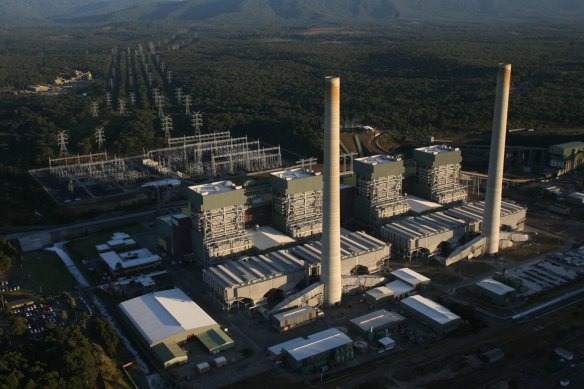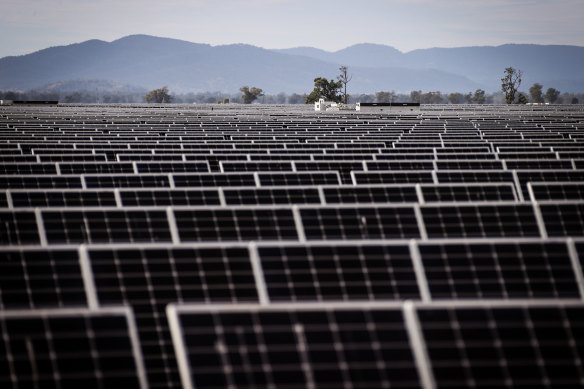
That standard is 0.002 per cent of unserved energy, which in plain English means that on average over an entire year you should have on average no more than 0.002 per cent of your energy needs not met.
But state governments found even this standard to be too lax and have set their own of 0.0006 per cent.
“This is belt and buckles and bits of string as well,” says Wood. “The state ministers are the ones who have to front the media if the lights flicker.”
And because the renewable energy systems being brought in to replace the old coal plants are, by nature, intermittent, we need far more generation capacity in the system as a redundancy, and all this needs to be “firmed” with batteries and pumped hydro and even gas peaking plants to be flicked on if supply becomes tight.
Clearly, while governments are determined to maintain reliability, they are also concerned with keeping consumer electricity prices as low as possible.
“NSW is stepping up the transition to cheap, clean, reliable renewable energy,” said NSW Minister for Energy and Climate Change Penny Sharpe, making the Eraring announcement.
All this means that the aeroplane we are building around us in flight must be far larger and more complicated than the one we are replacing.

The Eraring power station in NSW will stay open to buy time for the renewables revolution to meet energy needs.Credit: Dean Sewell
This also explains why the NSW government, which has bound itself with legislated emissions reduction targets it is not on track to meet, has proved willing to pay the private sector to keep the nation’s single dirtiest machine open for two extra years, and why Bowen voiced his support for the decision.
Historically, Eraring has produced 20 per cent of the state’s electricity and around 10 per cent of its emissions, around 11.86 million tonnes.
This will be lower under the extension period, which will see the plant run at a lower capacity, but it has opened the government up to criticism from environmental groups.
Loading
Nicki Hutley, an economist and councillor with the Climate Council, said the extension illustrated a failure of successive governments to act on time to address energy and climate imperatives. “State and federal governments have failed to build enough clean energy to ensure this coal clunker closes on time.”
The difficulties faced by politicians on Australia’s east coast are echoes of those hitting policymakers the world over.
Each year the International Energy Agency now publishes a Net Zero Roadmap report, effectively a blueprint showing the world what it needs to do put itself on a path to reach Paris Agreement goals.
The sums included in it are almost beyond comprehension. The 2023 roadmap said the world needed to invest US$4.5 trillion ($6.8 trillion) a year by 2030 on clean energy to cut global emissions by half to, in turn, keep on track to Paris goals.
Earlier this month the leading global energy and climate consultancy Bloomberg New Energy Finance published a report saying last year global spending surged 17 per cent to reach $US1.8 trillion. Neither that staggering sum nor rate of increase is enough.
“It is somewhat encouraging that we’re so near, but at the same time, it’s also so far because a lot of these investments aren’t fully profitable without further action,” said David Hostert, global head of economics and modeling at BNEF.
And it is not just an ocean of cash that needs to be committed around the world, but also of political capital.
Shutting down a polluting plant like Eraring to replace it with cheaper green tech is relatively popular, but as we progress towards our targets, the job will become more difficult and more expensive.
The IMF estimates we already have the technology in wind, solar and batteries to do around 80 percent of the work, but the last 20 will be harder.
It will demand newer, more expensive solutions and the deployment of more mature technologies like solar panels, wind turbines and transmission lines on increasingly contested land.
It will necessitate, says the IEA, the use of technologies that are not commercially viable and remain deeply contested, such as carbon capture. In some markets, it will demand the deployment of expensive power sources like nuclear.

Over the last 20 years, it’s become faster to install solar capacity.Credit: Bloomberg
Success is possible, but not inevitable, argues Michael Liebreich, who founded the consultancy that became BNEF. In a recent article, he noted that the cost of wind, solar and battery technologies had fallen far faster, and their capacity risen far more than was imaginable even 20 years ago.









 Add Category
Add Category